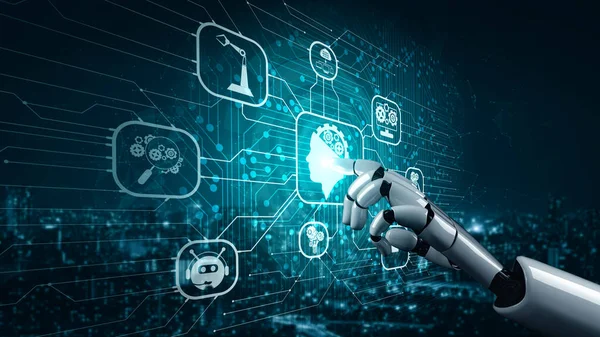Apni pathshala
Transforming Education: How AI Improves Student Learning and Teacher Support

Transforming Education: How AI Improves Student Learning and Teacher Support
Although AI has been around for a while, its acceptance in the world of education has been slow because teachers feel threatened it will replace them. By providing access to appropriate courses, improving communication with tutors, and allowing students more time to concentrate on other aspects of their lives, AI can help students’ learn better and faster .
The ability of AI systems to analyze and interpret large amounts of data, and to learn and adapt to new information, makes them ideal tools for improving the efficiency and effectiveness of education. Tech-savvy teachers will use AI tools to make learning available, accessible and affordable.
The following are some useful applications of AI in education:
- Adaptive Learning: Adaptive learning is a teaching approach that uses technology to adjust the difficulty and pace of material based on a student’s performance. This type of AI-powered learning can be implemented in a number of ways, such as through adaptive quizzes, games, and interactive simulations. For example, if a student is struggling with a concept, the system can provide additional resources or explanations to help them understand.
- Intelligent Tutoring Systems: Intelligent tutoring systems (ITS) use AI to provide personalized feedback and guidance to students as they work through problems or assignments. These systems can be used to teach a wide range of subjects, such as math, science, and language arts. ITS can provide students with immediate feedback and help them identify areas where they need additional support.
- Virtual Assistants: AI-powered virtual assistants can help students with scheduling, organization, and other administrative tasks. These assistants can use natural language processing (NLP) to understand and respond to student queries and can help students keep track of assignments, deadlines, and exams. They can also help students find resources, such as academic papers, and provide reminders for upcoming events.
- Intelligent Recommendation Systems: AI-powered recommendation systems can be used to recommend content or resources to students based on their interests and performance. These systems can use data on a student’s past performance and preferences to suggest relevant reading materials, videos, or interactive activities.
- Automatic Grading: AI can be used to automatically grade student assignments, freeing up teachers’ time for other tasks. Automated grading systems can be trained to grade multiple-choice questions, short-answer questions, and even essays. They can also provide feedback on student work, such as highlighting grammar errors or providing suggestions for improvement.
- Predictive Analytics: AI can be used to predict student performance and identify students who may be at risk of falling behind. Predictive analytics models can use data on student performance, demographics, and other factors to predict future academic performance. By identifying at-risk students early, educators can take steps to intervene and provide additional support.
- Intelligent Content Generation: AI can be used to generate new educational content, such as practice problems or summaries of complex concepts. This can be particularly useful for creating personalized study materials or for providing students with additional resources when they need them.
These are just a few examples of how AI can be used in education. As technology continues to evolve, it is likely that new and innovative uses for AI in education will emerge.
- Uncategorized
- January 24, 2023
- No Comments




